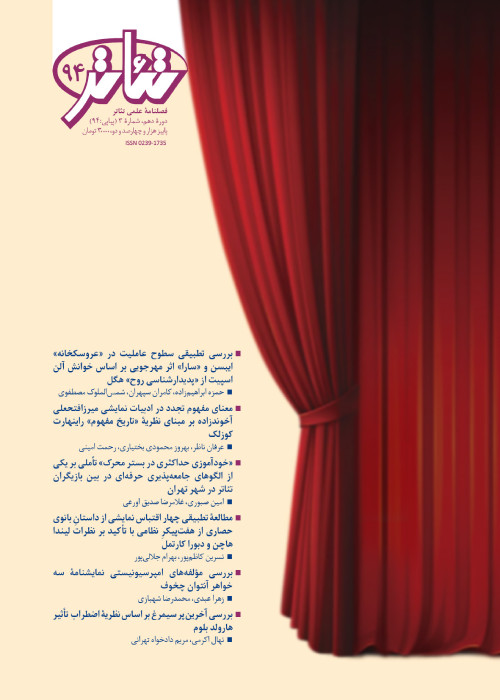A Historical look at the Period of Private Theater Activity in Iran with a Focus on the State of the Persian Theater between 1901 and1977
Creating a new theatre style was an important event in Iranian theater which occurred in the late Nasserian period coincided with the rise of the communism wave, which led to the beginning of the transformation of the Nasserian amusing theatre into European style theatre and the subsequent formation of the first private groups and theaters. This new structure quickly expanded independently along with financing itself, b) and after a while, it completely separated its path from all sorts of imitative theater, passion - play, and founded the roots of the first professional theaters in Iran between 1300 and 1332. But the flow of private theater in Iran could not continue for a long time, and that flow stopped after one or two decades. Several factors were effective on this halt: Establish strict rules, conflict between political parties and states, and lack of government support for private theaters at the time, and a tendency to create a theatrical flow that is consistent with government policies, in addition to hide the interregnums created. Therefore, this study was carried out aimed to address the following questions: What cultural currents were effective on the development of private theater ?How was the effect of political currents and parties on the development of private theater? What changes have been made in the process of private theater with the entry of sovereignty into the field of theater ?How did the political status of the government affect private theater activities ?And finally how were the effect of social and political factors on the process of stopping the private theater movement? The present study seeks evaluate the evolution of private theater in Iran from a historical perspective by considering the political and based on this method. The performances of the Anahita group exhibited such a new form of stage performances that had not existed in Iranian theater before. But their technical quality was quite mediocre .The final result of this research is that the Anahita group has trained great artists who each have had a significant impact on the Iranian theater .And ,until now, they have been able to prove and retain their brilliant and enduring names in Iran Dramatic Art history.
- حق عضویت دریافتی صرف حمایت از نشریات عضو و نگهداری، تکمیل و توسعه مگیران میشود.
- پرداخت حق اشتراک و دانلود مقالات اجازه بازنشر آن در سایر رسانههای چاپی و دیجیتال را به کاربر نمیدهد.



